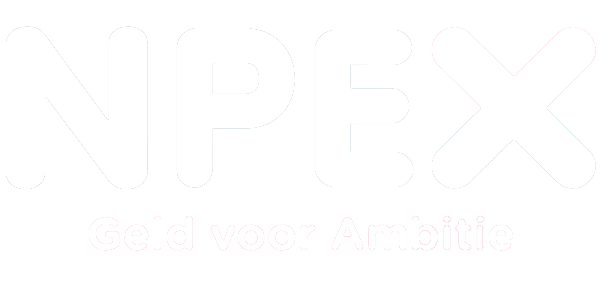Current state
The 2011 Momentum has reached its end. In 12 months from now, we’ll meet again in Vienna.
When we do meet in Vienna, the Documentum world will have changed. Documentum D7 and xCP 2.0 will be generally available. C6’s D2 (maybe even X3) will be the configurable alternative to Webtop. EMC OnDemand will be running for many months all over the world. Developers, partners, deliver vApp solutions to run in both the private and hybrid cloud. Next to it will be SharePoint and Office 2013. Both running on premise and in the cloud (Office 365 or otherwise).
Off course, still a lot can happen in between, but let’s assume that nothing does.
What are partners going to do with this knowledge? What will the customer do with this knowledge?
Will they change their way forward? Will they behave like any mother and father to-be, when they learn that they are pregnant of a beautiful baby in 9 months from now? Will they start preparing for the delivery of this new-born?
I think partners will. For successful partners, adopting to change is part of their DNA.
But what will the customer do? Will she change and if so how?
I believe she will. I believe she has to.
The ECM world is changing rapidly. The business never stopped changing. Competition continues to find ways to close gaps and take leads. Not less important, demands from new joiners in your company are rapidly changing. It’s nearing the point that you want to work with them rather than that they want to work for you.
However, how she’ll change will depend upon her current state related to her ECM vision and ambition.
Several scenarios are possible and include common scenarios like “Continue as is”, or “Technical ‘as-is’ upgrade”.
One particular scenario that could happen is the scenario what I would like to call “re-think & re-do”.
The “re-think & re-do” scenario is an appealing scenario. It can be a game changer. It applies lessons learned, leverages new functionality, and re-implements the requirements in the new target environment.
The soccer analogy of “re-think & re-do”
There is a great analogy to be made with sports. Especially team sports. Let’s take soccer.
Winning the National league, the European Champions League, and the World Cup for Teams are goals for the top teams. Many want it, few get it.
The easy road of buying 25 of the best players doesn’t get you there. Many tried, none succeeded(1).
Building a winning team is a carefully designed growth path that takes effort and time.
On this route, every now and then a player gets injured for a longer time, leading to adjustments in the process. Patches are applied.
Sometimes players get better offers elsewhere and new players have to be bought or incorporated from youth teams, the labs. Sort of a Service Pack is applied.
And then success is there. The team is on a winning streak.
After some time the successes diminish. Competing teams catch up. The common game-play changes. The players on the team are over the hill, nearing their sports technical end of life.
At this point the team manager has to make decisions.
A common decision is that they accept the absence on the prime stage for a year and rebuild the team from scratch.
Where in the previous period, patches and service packs have been used to continue, this time a new major release is needed.
You see this happening in many of the Olympic team-sports (field hockey, volleyball) in the post-Olympic year. The next World Championships are typically 2 years away, the next Olympics 4 years. Enough time to re-do the team and go for success at the next major event.
The good thing about building a new team, a new major release for future success, is that it allows the team manager to apply the lessons learned from the previews period (re-think) as well as to recover from unwanted side effects that come with patches and service packs (re-do).
The lessons learned can be in many different forms. As an example:
- The game-play may have shifted from physical to tactical and thus new requirements apply.
- The common positioning on the midfield may have changed from 3 players on one line to 4 that are positioned in a diamond shape. In essence the functional team design is changed.
Also the side effects come in different forms with examples like:
- Due to the absence of left-footed wingers, a right-footed player has become the left-winger.
- The youngster, replacing a player that has left, is not performing consistently.
Taking these lessons learned as well as side effects into account, a new design is created to succeed in future success and the new journey begins.
The EMC reality
The process illustrated above for soccer, can be applied to Enterprise Content Management solutions like Documentum. There too, patches and service packs are applied until you reach the point where you have to re-think what to do with a next major release.
Given the announced release of Documentum 7 / xCP 2, the adoption of C6’s D2 user interface, the availability of Documentum in the Cloud (OnDemand), and also the omnipresence of SharePoint fits, the point of re-think and re-do has arrived. The time is here and now. Too much is and will change to continue as if it’s still the same.
This is a far from easy task and is highly dependent on the unique settings of the customer.
It takes time. It takes careful considerations. It needs a free spirit to not limit yourself to budget, resource, calendar, or any other constraint yet. It takes guts in a budget constraint business to acknowledge that maybe with the new facilities, something better, cheaper, more flexible, and more future proof is possible and that now is the time to find out. It requires expertise to take it to the extreme on paper and see what it brings, to think out of the box.
Because even finding out requires budget, some arguments to help you build the business case are given below.
EMC OnDemand
- Supported by certified professionals on behalf of EMC; No need to invest in company resources.
- Off premise in the cloud or locked down ‘all-in’ box on premise; No need to purchase hardware.
- Sizing for average load with on demand resource expansion to handle peak loads; no need to invest in hardware that can cope with peak loads that occur only once a week.
- Optimum module architecture through xMS, the requirement-based configuration descriptions that are used to generated the required virtual servers.
SharePoint
- SharePoint is the users choice for collaboration and “work in progress” content management.
Leverages the dominance of MS Office on the desktop and the user acceptance that comes with it. - SharePoint doesn’t (yet) provide the appropriate means to cover all enterprise needs, but SDF(2) is there to rescue. SDF, the SharePoint – Documentum Framework provides optimal bi-directional integration with Documentum to cover the enterprise needs.
C6’s D2
- Reduce cost of customizations of Webtop by leveraging the configurable user interface that D2 delivers.
- Replace Webtop with a much more tailored and applicable interface for those users that need functionality that is not provided through SharePoint or xCP applications.
- Increase user acceptance with the appealing skinnable interface that D2 provides.
Documentum D7 / xCP2
- Leverage the new deployment model that uses vApps.
- Leverage the ability to reverse patches if the outcome has unwanted side-effects
- Leverage the vast amount of documented functional patterns and solutions to build xCP applications.
- Leverage the growing number of xCelerators to reduce implementation time and effort.
Non-technical
- Replace old school designs and include lessons learned of the current implementation.
- Start supporting the Knowledge Worker; Make it goal-driven and reduce the rigidness of traditional workflows.
- Prevent the typical chaos that uncontrolled, non-governed SharePoint environments tend to create.
- Take a controlled route towards the cloud by using on premise cloud technology.
Conclusion
I believe it’s here and now that you have the opportunity to re-think what your Documentum centric solutions add to your business and re-do them using Documentum & xCP through EMC OnDemand and integrate them with SharePoint through SDF.
If the signs are right, we’re expecting a beautiful baby somewhere in the late summer of 2012.
But, we have to work for that. It will not come easy.
The above mentioned arguments are not meant to be complete or generically applicable; further discussion is needed to incorporate the specifics of your organisation. That first step is yours. I’m sure you can do it!
Ed Steenhoek
ECM Solution Principal
- While writing this post, I was thinking about Manchester City. A soccer team where huge investments have been made in recent years but yet without success. However, after reviewing this post, it dawned to me that it is also applicable to Oracle. Oracle has been purchasing ECM technologies and companies but still doesn’t deliver a clear package that delivers success on its own – that is without cross selling from e.g. Siebel or the Oracle RDBMS – that matches the investments made.
- Implementing SDF requires a specialism that is provided through EMC Professional Services or directly from selected partners. Informed Consulting is proud to be that partner for EMEA.


















